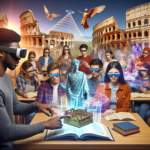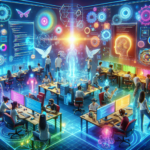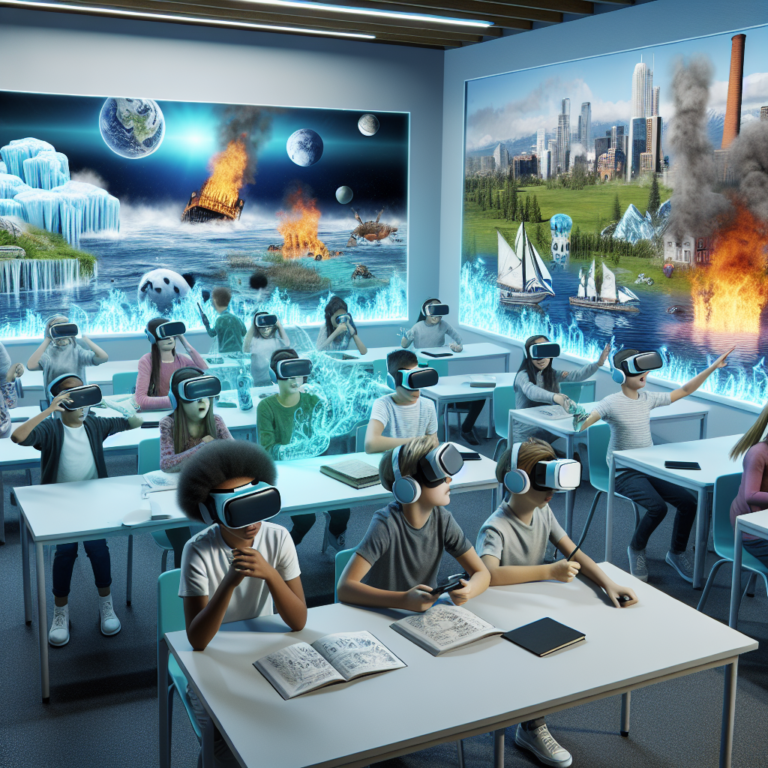Harnessing the Power of XR: Experience Global Warming Like Never Before 🌍
XR Climate Education: A Virtual Gateway to Reality
Extended Reality (XR) encompasses a range of immersive technologies that blend the real and virtual worlds. This exciting medium includes Virtual Reality (VR), Augmented Reality (AR), and Mixed Reality (MR). It is transforming how we interact with our environment and how we learn. XR experiences can allow users to visualize complex concepts, such as the effects of climate change, in a way that traditional teaching methods cannot.
Simulating Global Warming: Why XR Matters
XR Climate Education: Global warming is not just a distant threat; it is a reality that affects communities worldwide. However, understanding its full impact can be challenging. What if we could use XR to transport learners into the future, showing them the effects of climate change? Imagine walking through an XR simulation that demonstrates the flooding of coastal cities or witnessing the devastation of a forest fire.
XR could serve as a captivating educational tool by offering:
- Visual Insights: Seeing is believing! XR enables individuals to visualize data and scenarios that might seem abstract or distant.
- Empathy Building: Experiencing the effects of global warming firsthand in a controlled environment can foster empathy and urgency, prompting action.
- Interactive Learning: XR environments allow for a two-way interaction, making learning engaging and memorable.
- Safe Simulations: Users can explore dangerous or extreme environments safely, enhancing their understanding without the risk.
Creating Engaging XR Experiences for Education
XR Climate Education: The creation of XR content that simulates global warming effects should focus on both engagement and education. Here are some effective strategies:
1. Collaborate with Experts
Working with climate scientists and educators will ensure that the content is not only engaging but also scientifically accurate. This collaboration can lead to enriching narratives that resonate with users.
2. Use Real-World Data
Leverage current climate data to create realistic simulations. For example, using satellite imagery and predictive models, developers can create immersive environments representing projected flooding or temperature increases.
3. Develop Interactive Scenarios
Allow users to make choices that impact their virtual environment. For instance, they could decide to plant trees in a deforested area and see the benefits over time or witness firsthand the consequences of inaction. Such interactive storytelling can make climate change concepts relatable and urgent.
4. Create Multi-Sensory Experiences
Engaging multiple senses enhances the educational experience. Use soundscapes — like crashing waves during a storm or the crackling of fire — to evoke emotions that visuals alone might not convey.
5. Foster Community Engagement
By integrating social components, users can share their experiences, insights, and actions in response to the simulation. This interaction can promote a shared mission and encourage collective action against climate change.
The Impact of XR on Climate Education
The educational landscape is evolving, and XR is at the forefront of this transformation. By immersing learners in the dire implications of global warming, we are paving the way for a generation that is not only informed but also motivated to take action.
XR Climate Education: Changing Perspectives
XRs’ immersive nature can help shift perspectives, allowing individuals to understand the scope and urgency of climate change issues. Students might develop a deeper appreciation for sustainability and be inspired to innovate for a more eco-friendly future.
Hands-On Learning Opportunities
XR experiences can be integrated into school curriculums, providing students with hands-on opportunities. For example, students can engage in virtual field trips to areas affected by climate change, such as the Arctic, to witness melting ice caps or deforested rainforests.
Assessing Knowledge and Attitudes
XR applications can include assessments before and after simulations to gauge changes in knowledge and attitudes toward climate change. This process can provide invaluable insights into what resonates with learners and how they can be further engaged.
Building a Sustainable Future with XR
As XR technology continues to advance, so does the potential for educational experiences that can save our planet. Imagine classrooms filled with students wearing VR headsets, gripped by the reality of rising sea levels, air pollution, and biodiversity loss. This transformative approach to learning could establish a generation more equipped to tackle environmental challenges.
Case Studies: Success Stories of XR in Climate Education
Several educational institutions and organizations are already exploring XR for climate education:
1. The UN’s Climate Change VR Project
The United Nations has embraced VR as a means to communicate the impacts of climate change globally. Through immersive storytelling, individuals can experience real-world consequences and understand the urgent need for climate action.
2. The Wildfire Simulator
Education organizations have developed wildfire simulation experiences that allow participants to see the rapid spread of fire under various climate scenarios. This is pivotal in demonstrating the intensity and speed with which wildfires can occur due to climate change.
3. Virtual Ecosystem Exploration
Some programs offer users the opportunity to explore rich ecosystems, like coral reefs, facing drastic changes due to global warming. Participants can witness coral bleaching and understand its broader implications for marine life.
Wrapping Up the Vision for XR in Education
Incorporating XR experiences to simulate global warming effects opens up a world of possibilities for educational institutions. By fostering proactive learning, empathy, and engagement, we can equip future generations with the knowledge and concern needed to advocate for our planet. Together, let us harness the potential of XR to create an impact that resonates for years to come! 🚀




0 Comments